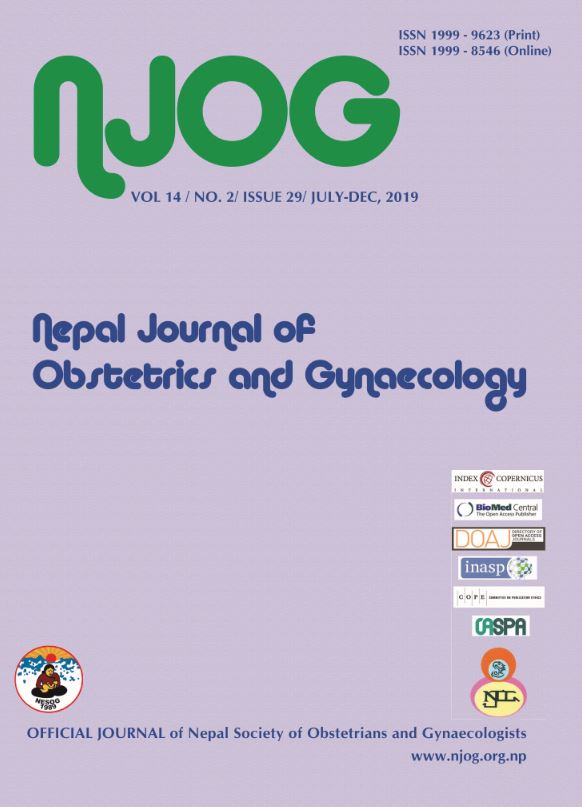Prevalence and Outcome of Induction of Labor in a Tertiary Care Center of Kathmandu, Nepal
Keywords:
fetal distress, induction, obstetric, misoprostolAbstract
Aim: To study the prevalence of induction of labor and obstetric and neonatal outcome among delivery cases in the maternity unit of a tertiary care center.
Methods: This is a prospective cross-sectional study conducted on pregnant ladies presenting to maternity unit of Shree Birendra Hospital, Chhauni over a period of six months from March to August 2017. All pregnant ladies in labor during the study period were enrolled. Induction of labor, mode of delivery, perinatal outcome (gestational age at delivery, birth weight), and maternal complications if any were recorded.
Results: Among 497 deliveries in the study period, induction of labor was performed in 117 (23.5%) cases with post-date pregnancy being the most common indication. Induction was successful with vaginal deliveries in 82(70.1%) cases, while in the rest, IOL failed. Among the induced cases, 17 (14.5%) neonates had poor APGAR at 5 minutes and there was significant association of IOL with low APGAR. There was normal post-natal recovery in 108 (92.3%) induced cases while 9 (7.7%) cases developed some maternal complications. IOL has no significant association with maternal and neonatal complications or perineal injury (p>0.05).
Conclusions: The prevalence of induction in this center is slightly higher than other centers. The IOL has significant association with low APGAR at 5 minutes but no significant association with the neonatal and maternal complications.
Downloads
Downloads
Published
How to Cite
Issue
Section
License
Copyright on any research article in the Nepal Journal of Obstetrics and Gynaecology is retained by the author(s).
The authors grant the Nepal Journal of Obstetrics and Gynaecology a license to publish the article and identify itself as the original publisher.
Articles in the Nepal Journal of Obstetrics and Gynaecology are Open Access articles published under the Creative Commons CC BY-NC License (https://creativecommons.org/licenses/by-nc/4.0/)
This license permits use, distribution and reproduction in any medium, provided the original work is properly cited, and it is not used for commercial purposes.



